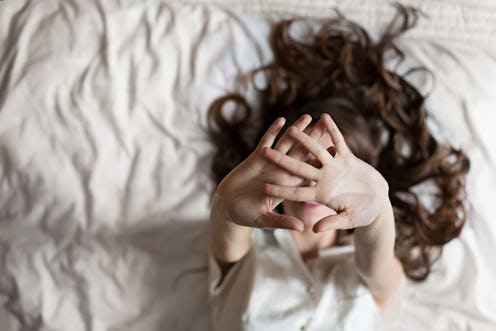Life
This Is What Happens When Your Brain’s “Sleep Switch” Is Broken

In 2018 scientists discovered something that had been theorized by generations: the brain has a "sleep switch" that activates to send us to dreamland. They found that cells in a region of the brain's hypothalamus called the ventrolateral preoptic nucleus, or VLPO, trigger sleepiness; if you activate them in mice and rats, they induce normal, restful sleep. But what happens if your sleep switch is broken?
It's still very early days for understanding the sleep switch — it's only just been confirmed to exist. But we do know a bit about the VLPO and how it works — and what it means when it stops functioning properly. People with Alzheimer's with damage to their VLPO cells have shown serious issues with sleeping, according to a study in 2014, and lesions in the cells also cause sleep issues. So damage to the cells themselves seems to be the key way in which the sleep switch starts going awry.
When the sleep switch goes offline, its mechanisms for causing sleepiness and wakefulness stop working as well. It's thought that the VLPO helps us fall asleep and wake up through the use of neurotransmitters, which are substances that help brain neurons communicate. Research suggests that the VLPO produces neurotransmitters called GABA and galanin; when they're released, they inhibit bits of the brain involved in arousal and wakefulness, turning them off.
Researchers in 2008 called this "an electrical “on-off” switch", enabling the body to maintain a stable state of wakefulness and sleep." The VLPO also seems to lower our body temperature to induce sleepiness, but the people behind the 2018 study are doing more studies on how that connection works.
If you're wondering if VLPO issues might be behind your difficulties dropping off to sleep, you might be waiting for a while for clarification. At the moment, scientists have only discovered damage to the VLPO in people with neurodegenerative diseases like Alzheimer's, or in people who've had brain injuries. A study in 2016 showed that the VLPO appears to be undamaged in people with narcolepsy, a condition where patients fall asleep unexpectedly — so the VLPO isn't the key to every single sleep disorder around. If you've had a concussion or any brain injury, the VLPO may have been damaged as a result, so it's worth speaking with your doctor about your concerns.
In the future, people with VLPO issues might be able to be treated with a technique known as magnetic deep brain stimulation. It's a treatment that involves using targeted magnetic waves to change electrical signals in the brain. It's already been trialled with positive results for VLPO problems, but science still doesn't know enough about VLPO or how it works to understand exactly what's happening.
The mechanism of the sleep switch is a world of research science doesn't quite understand yet. In a few decades, we'll hopefully know a lot more about how it works and where it goes wrong — and be able to do more to fix it.